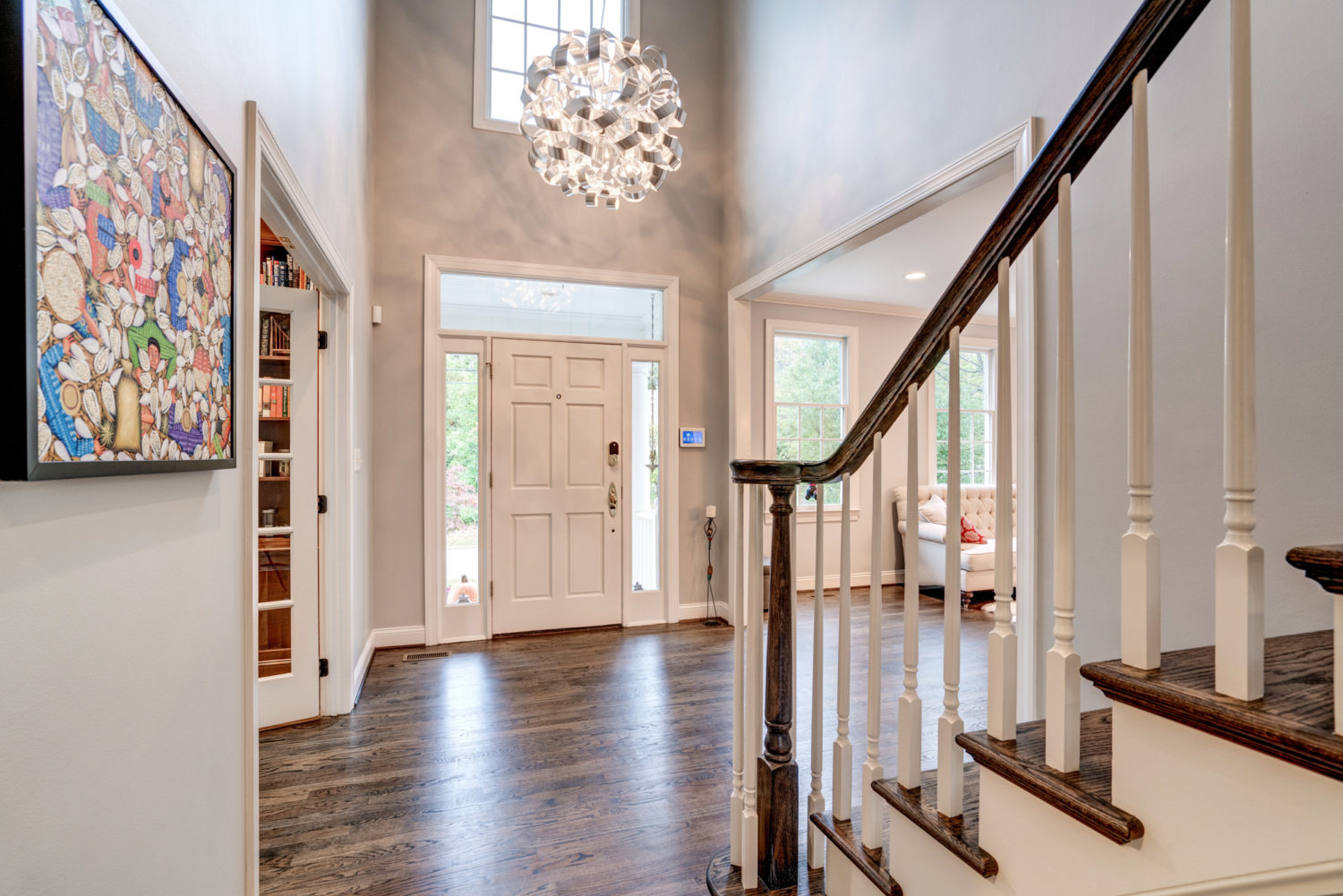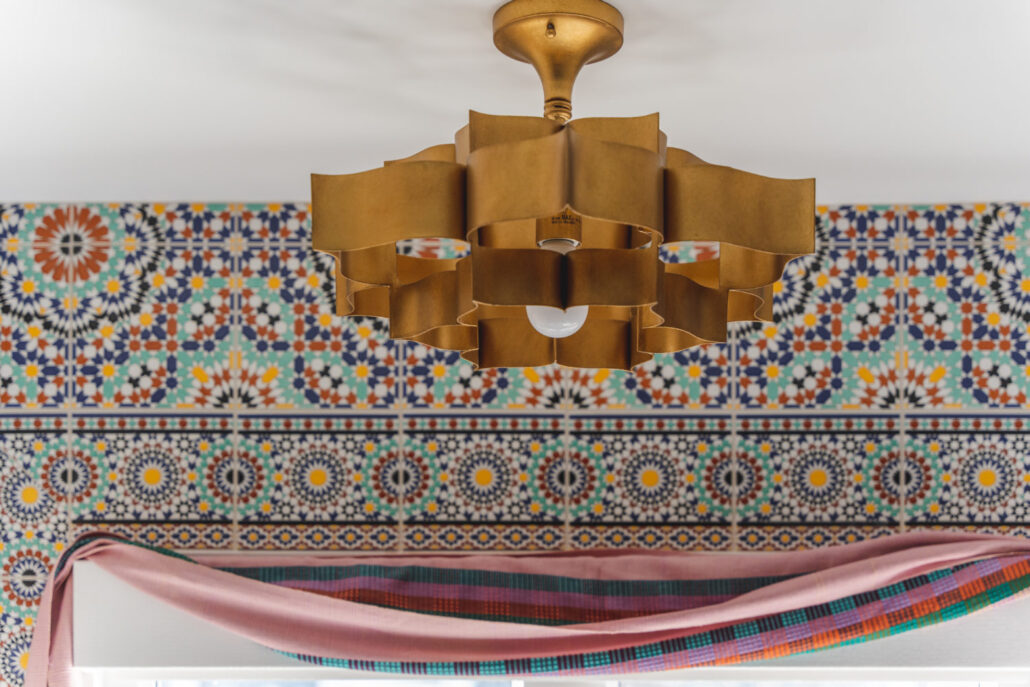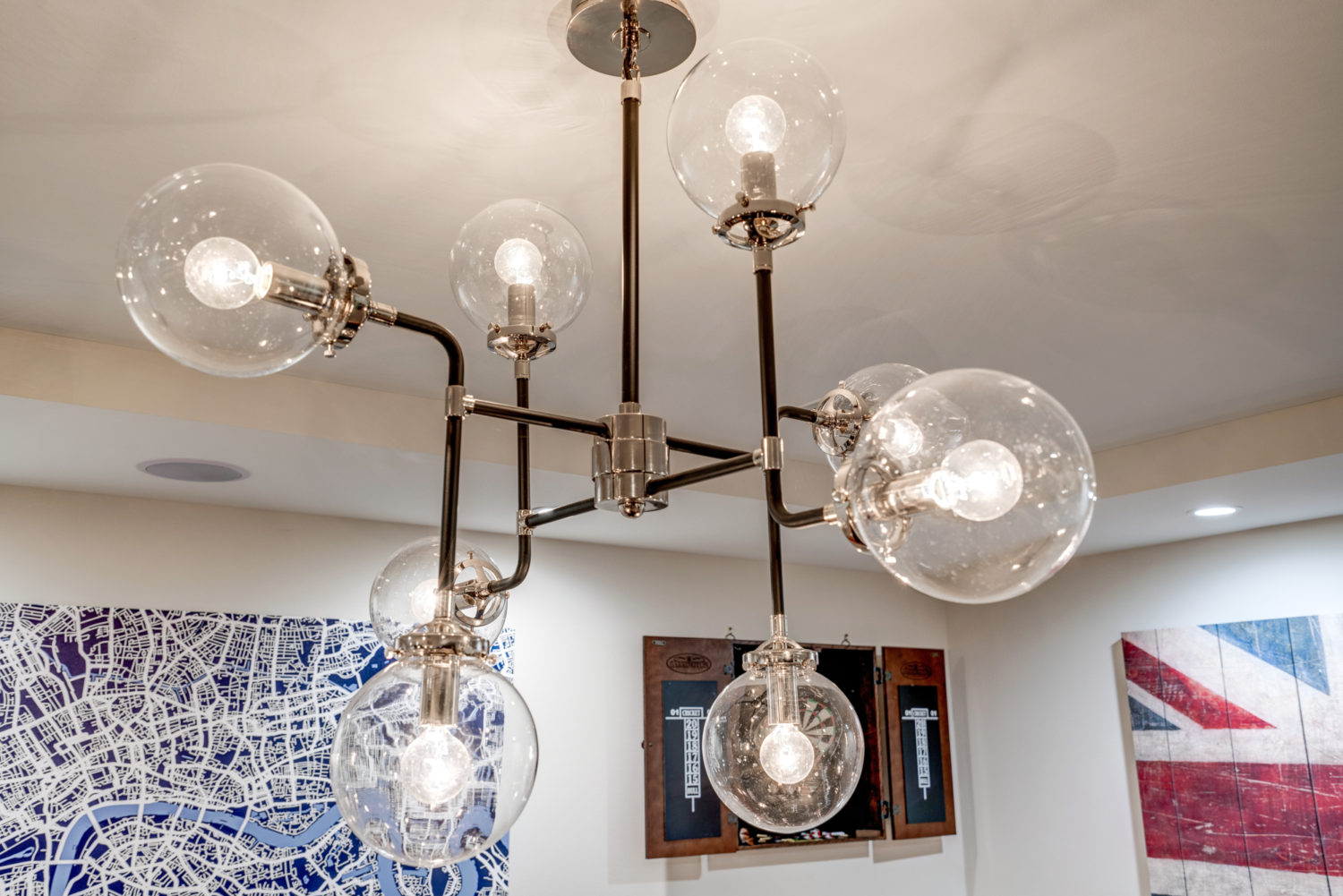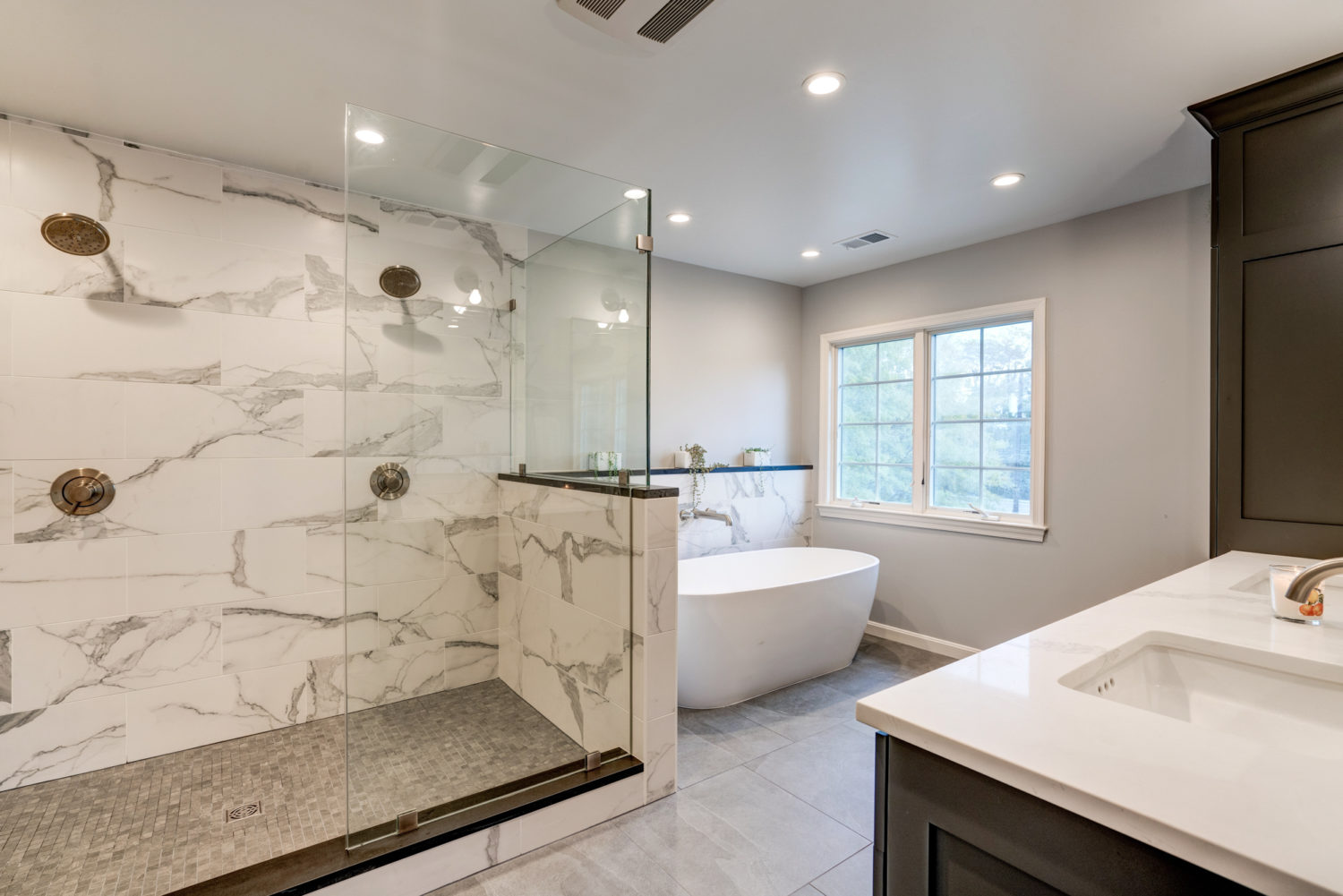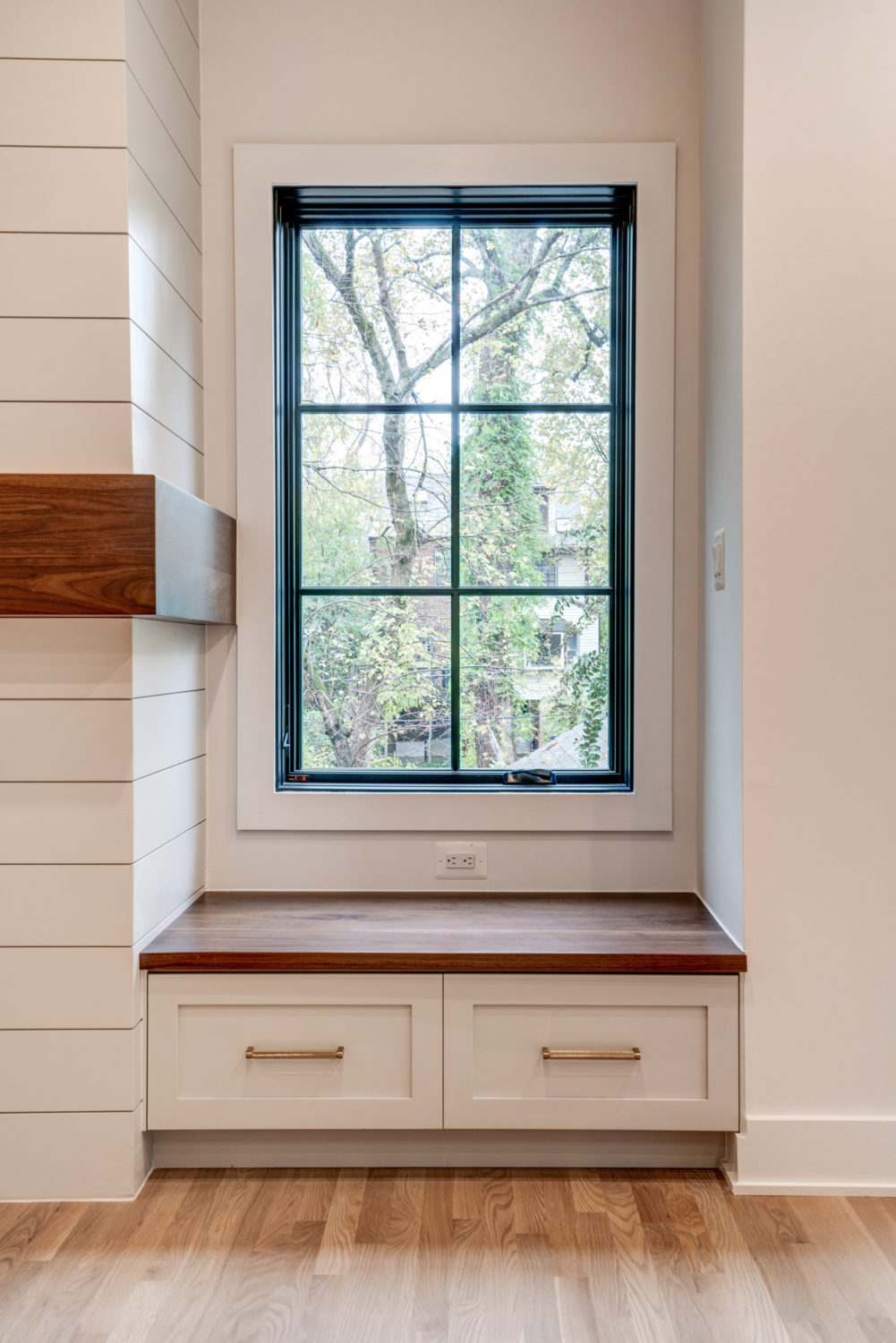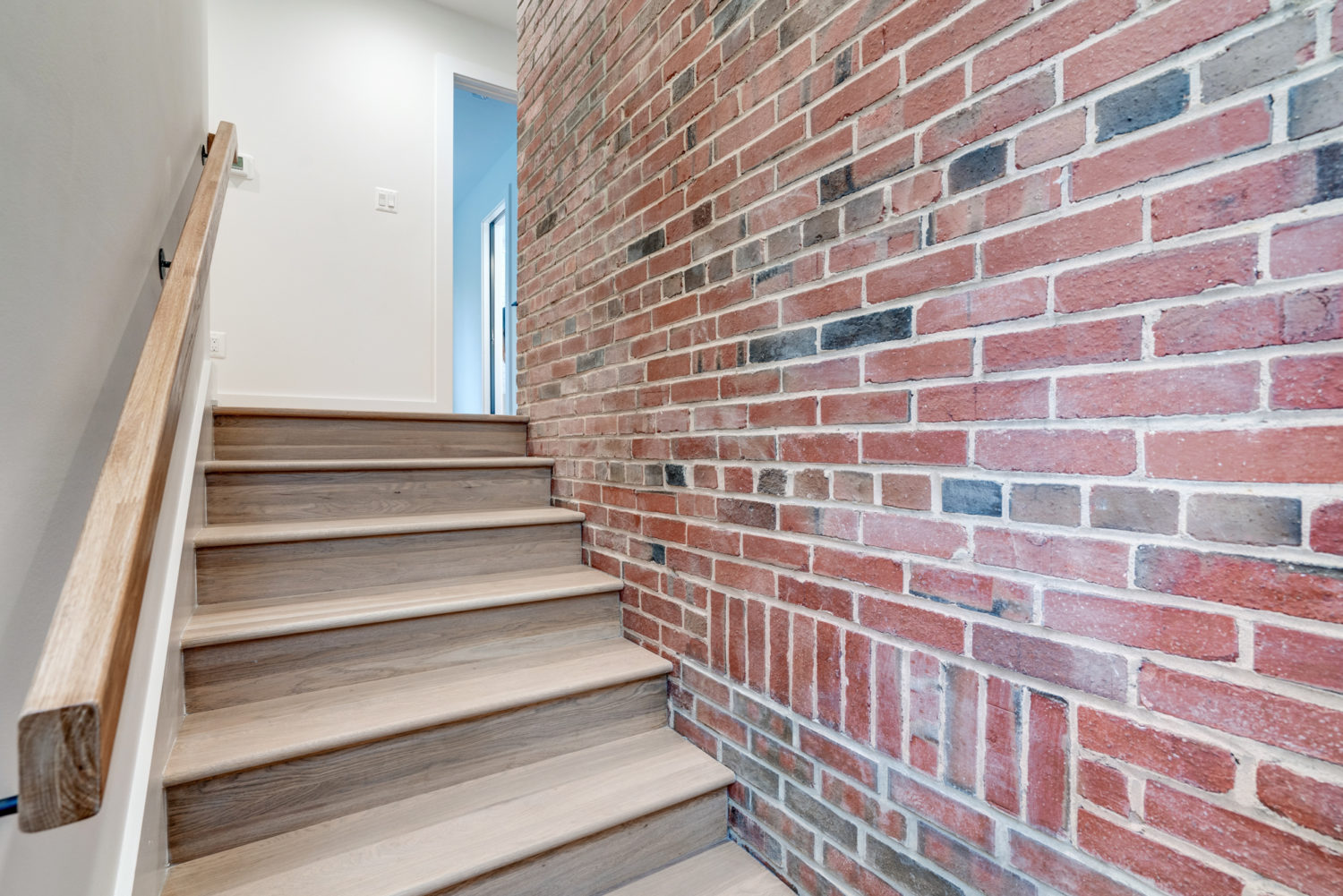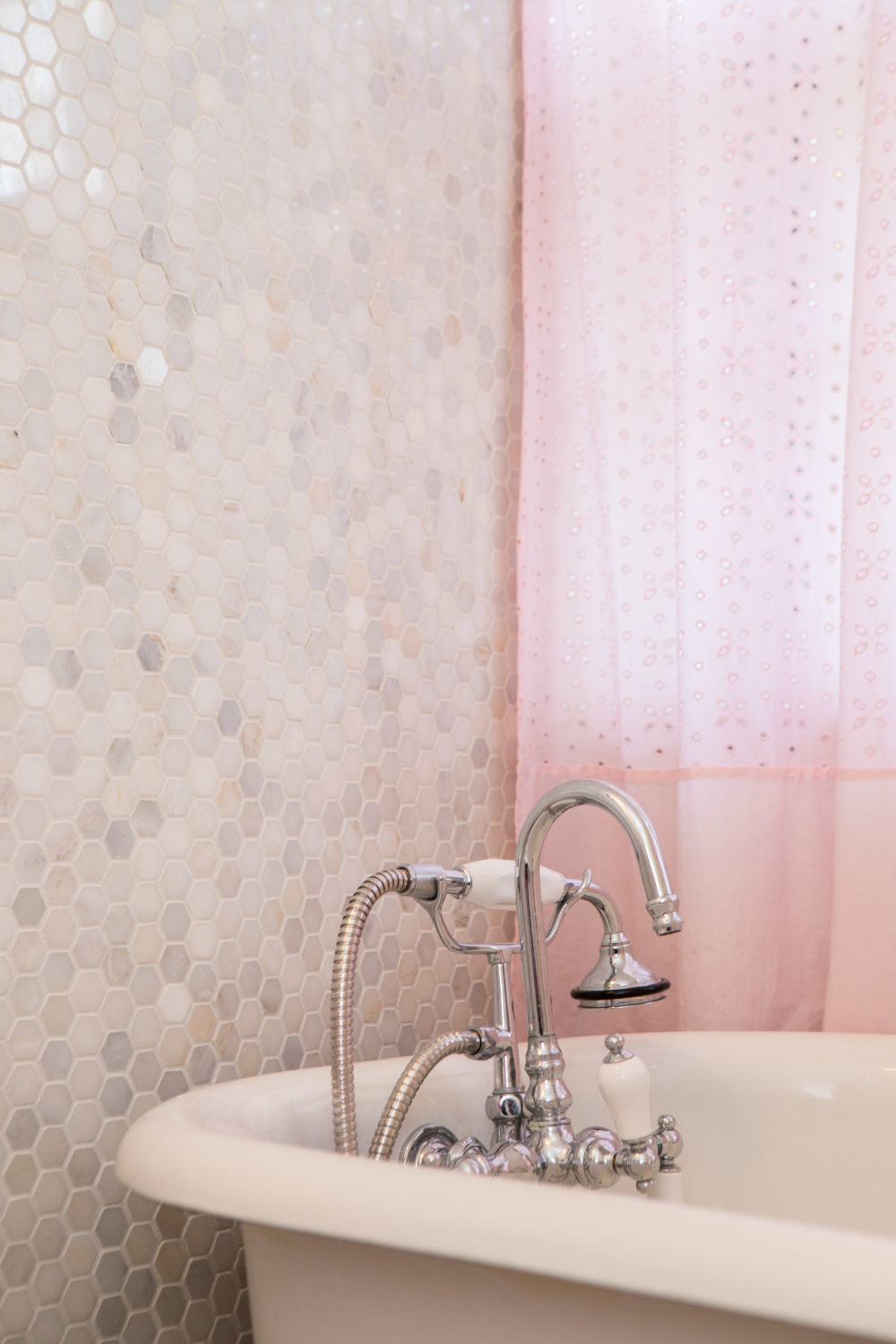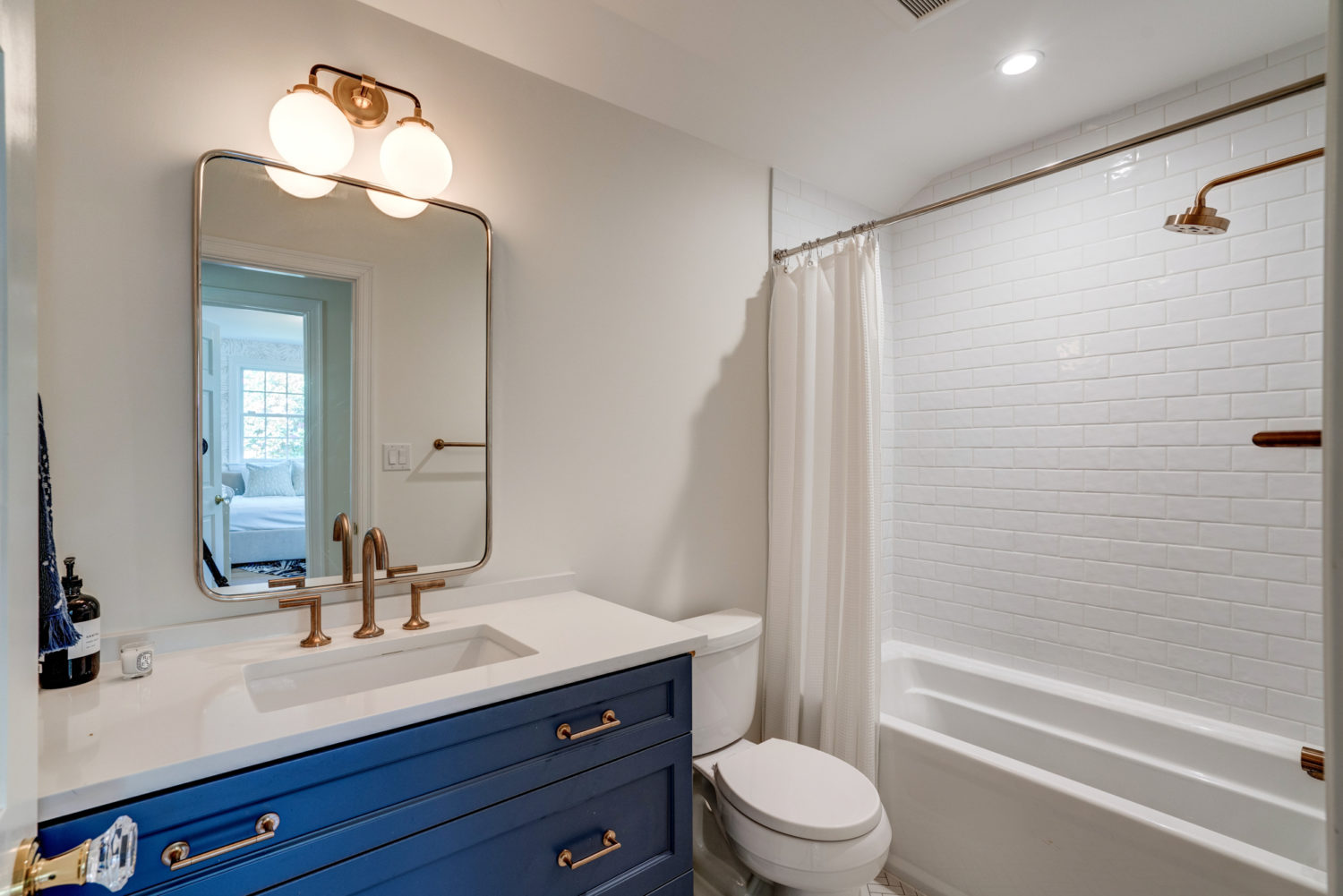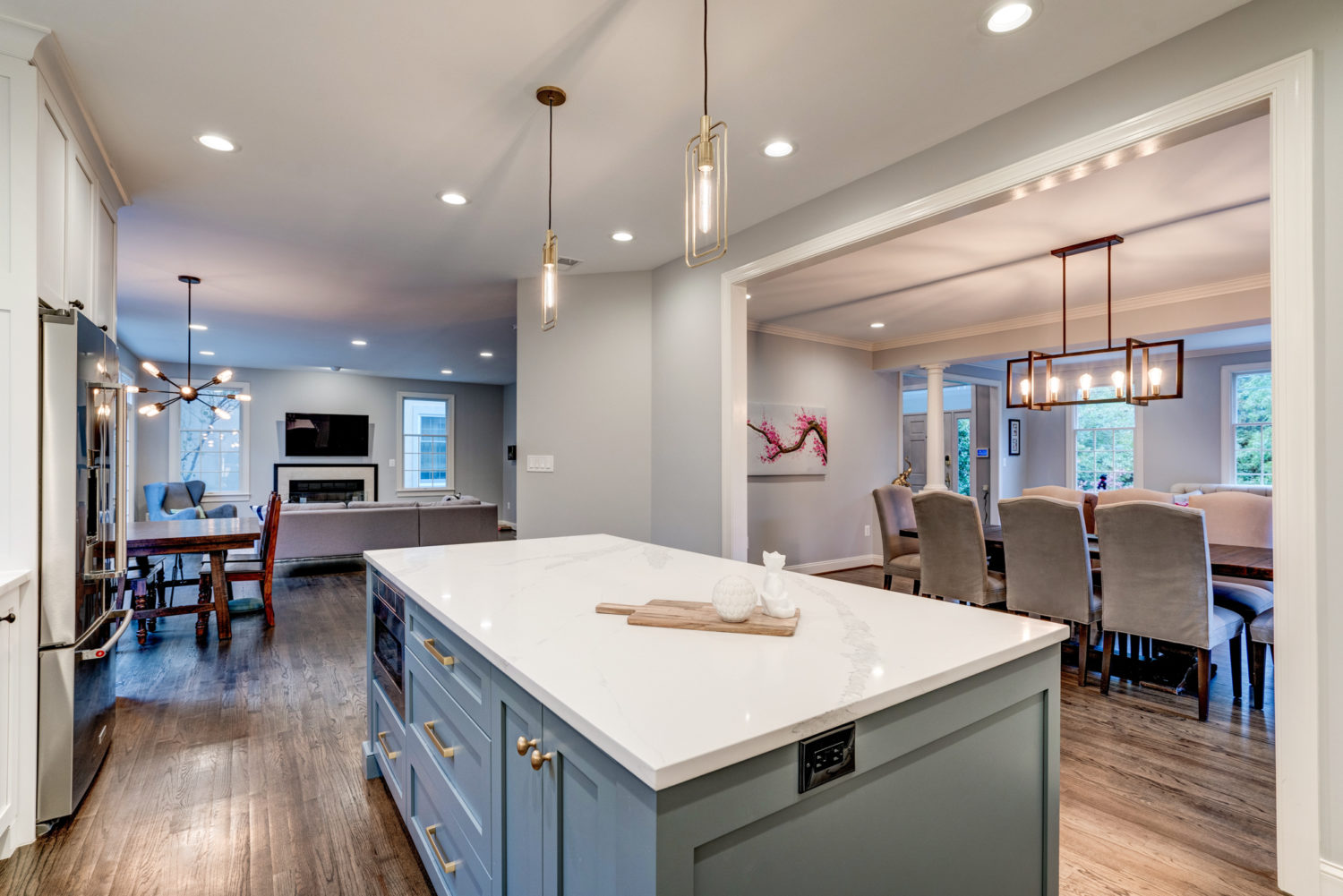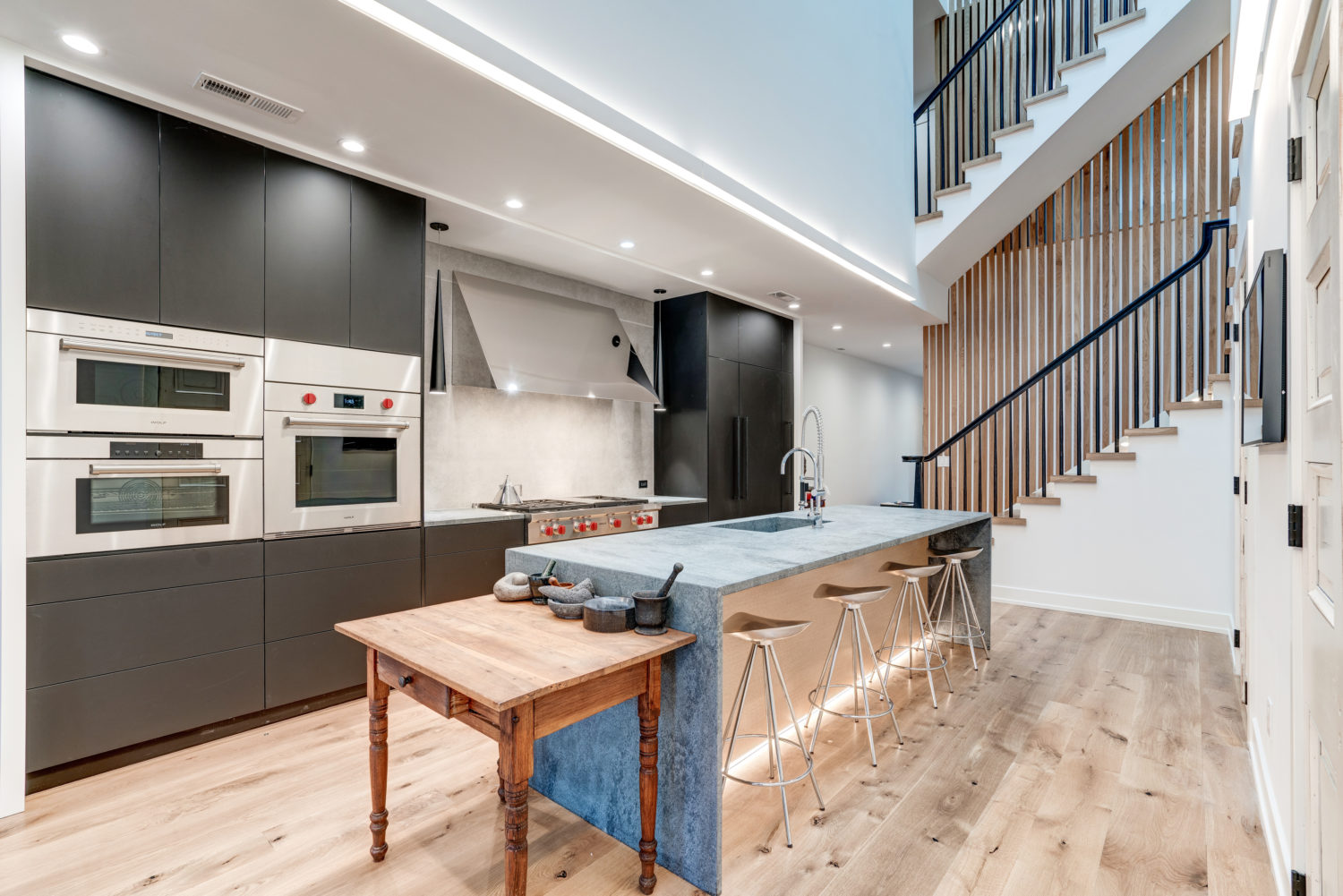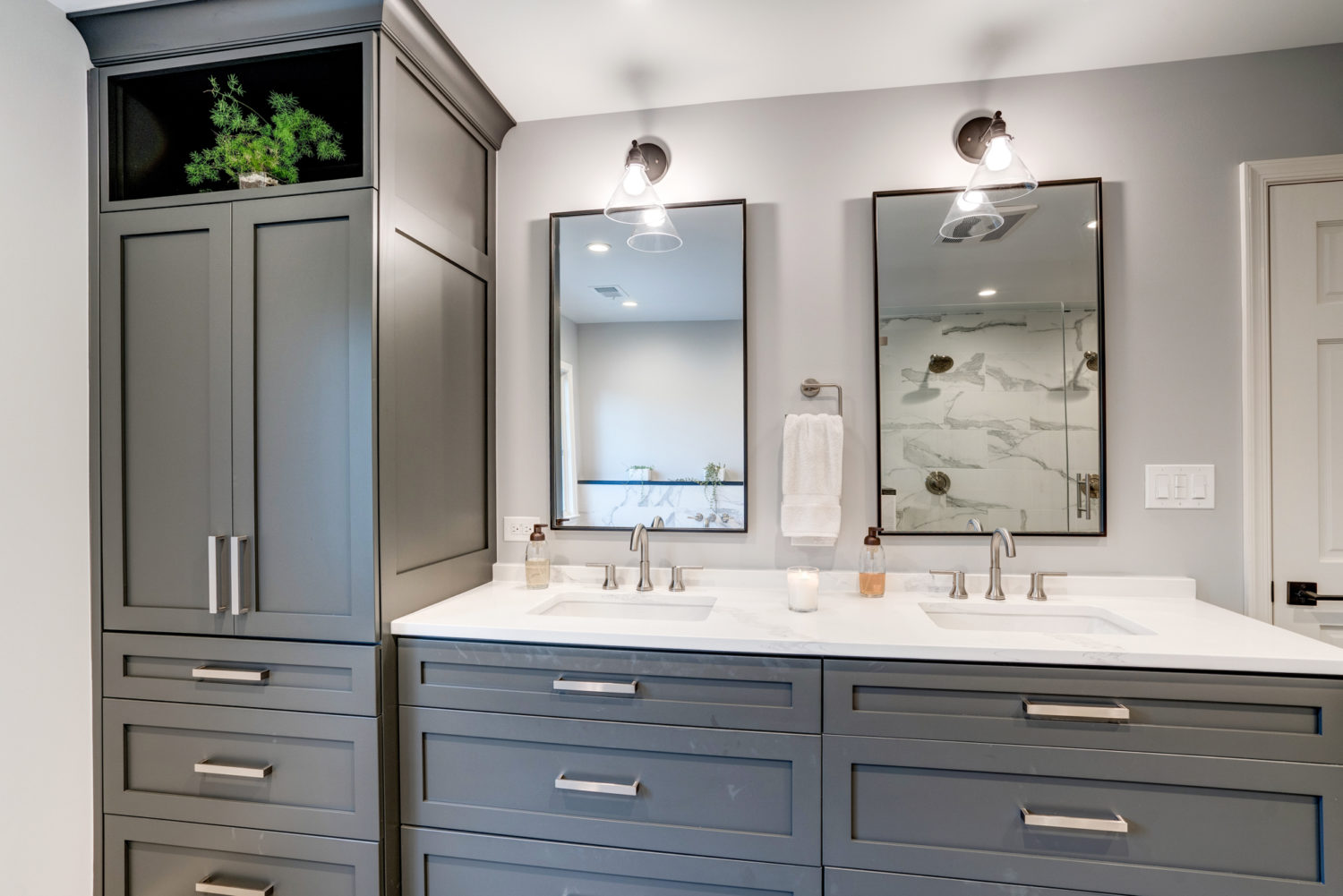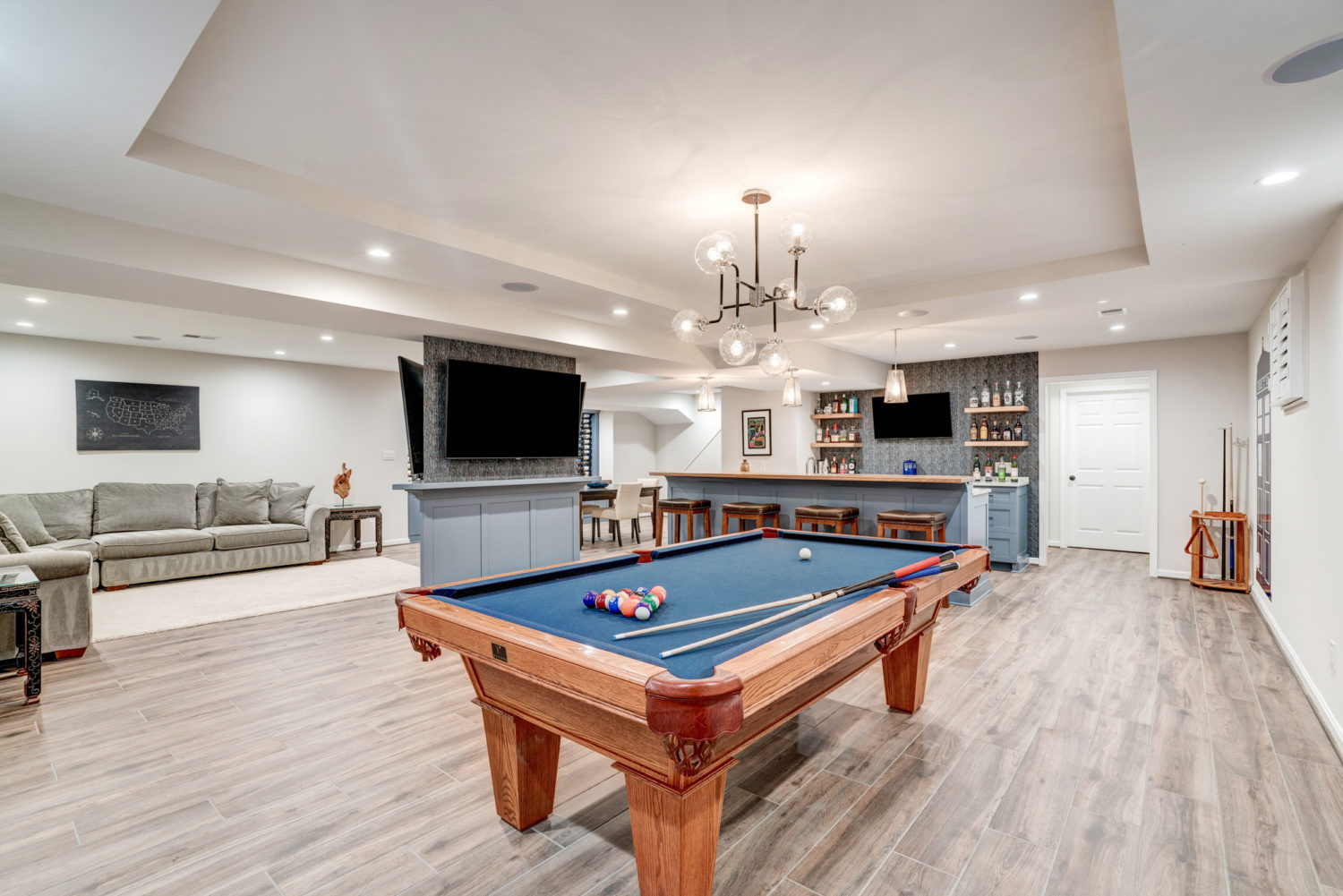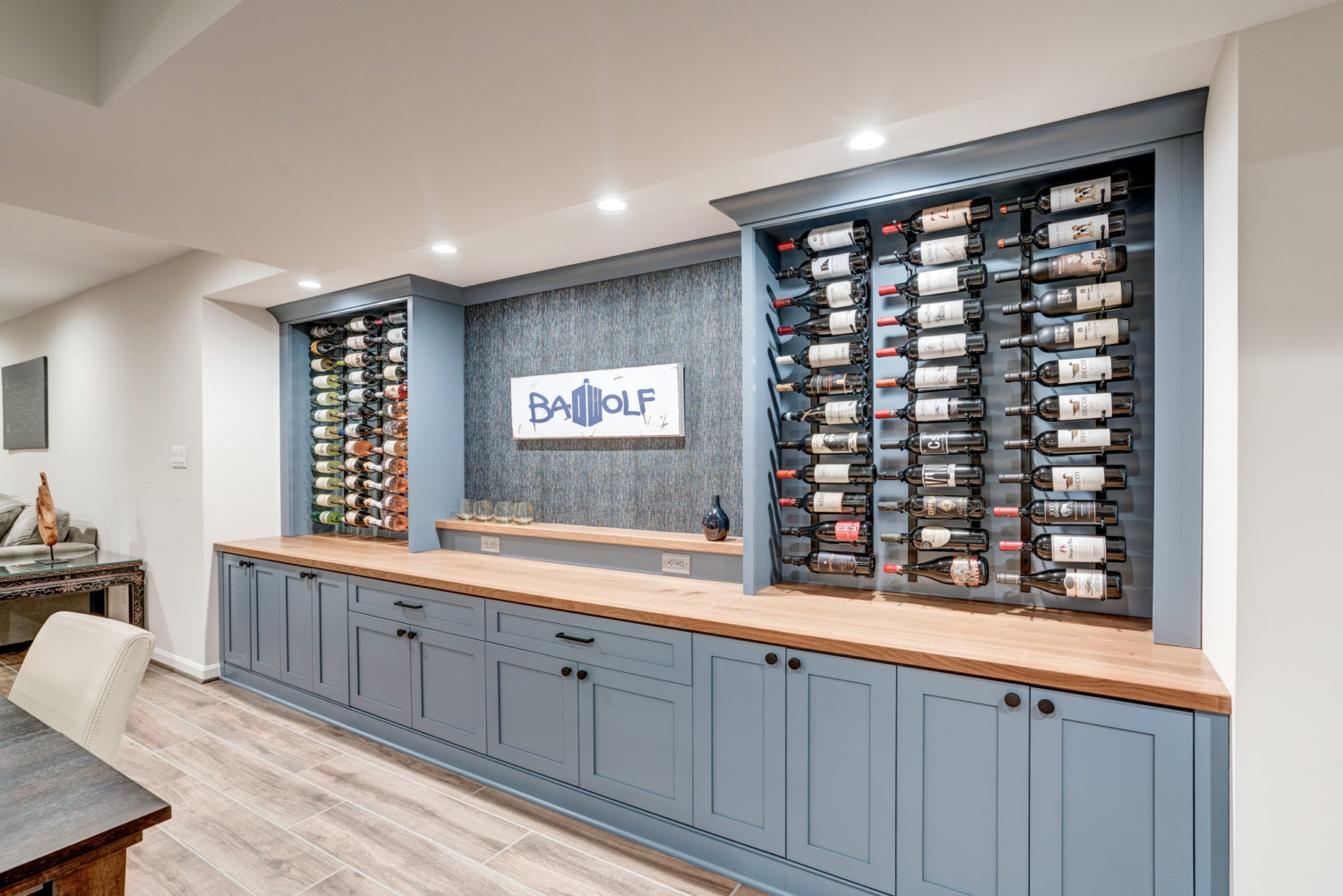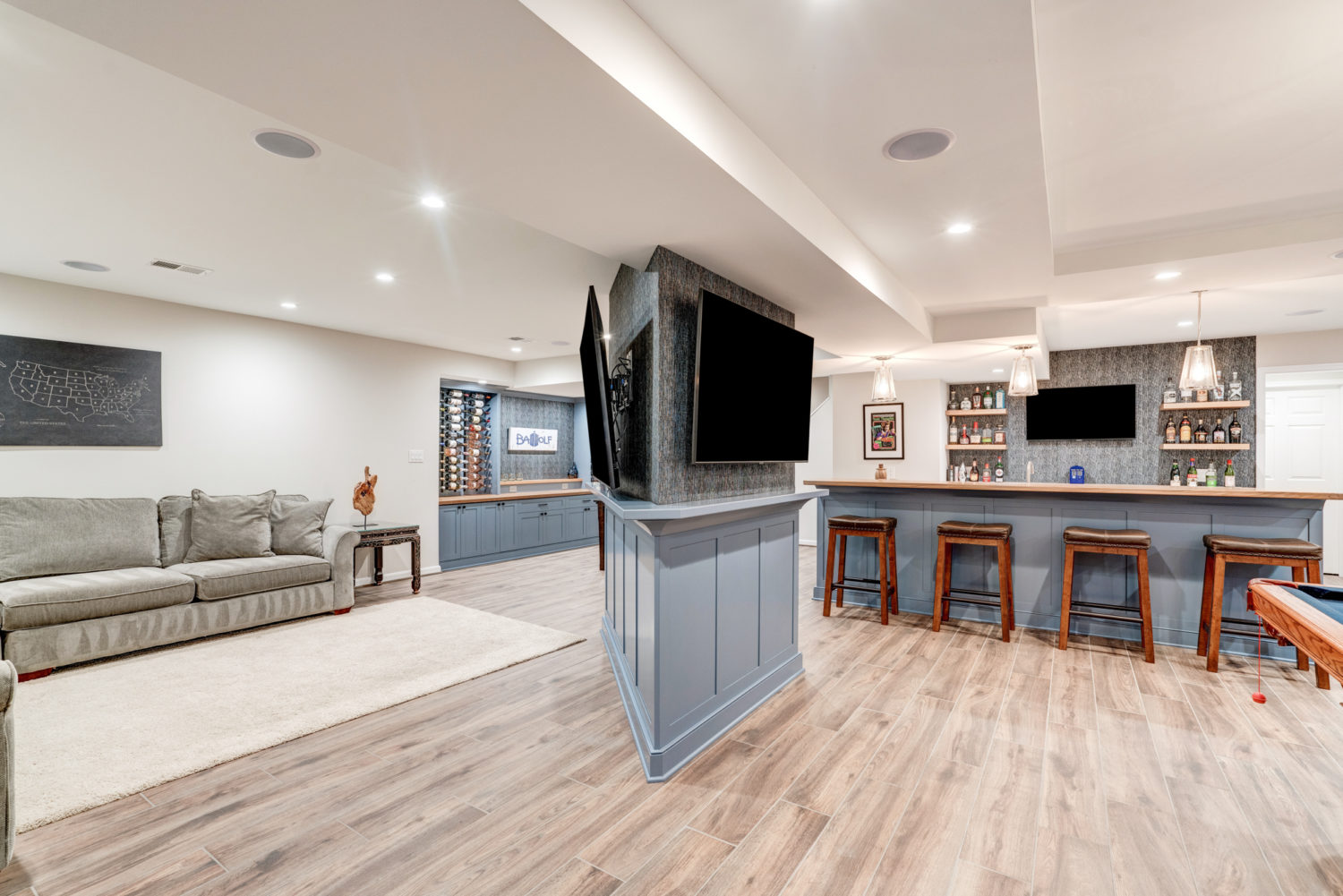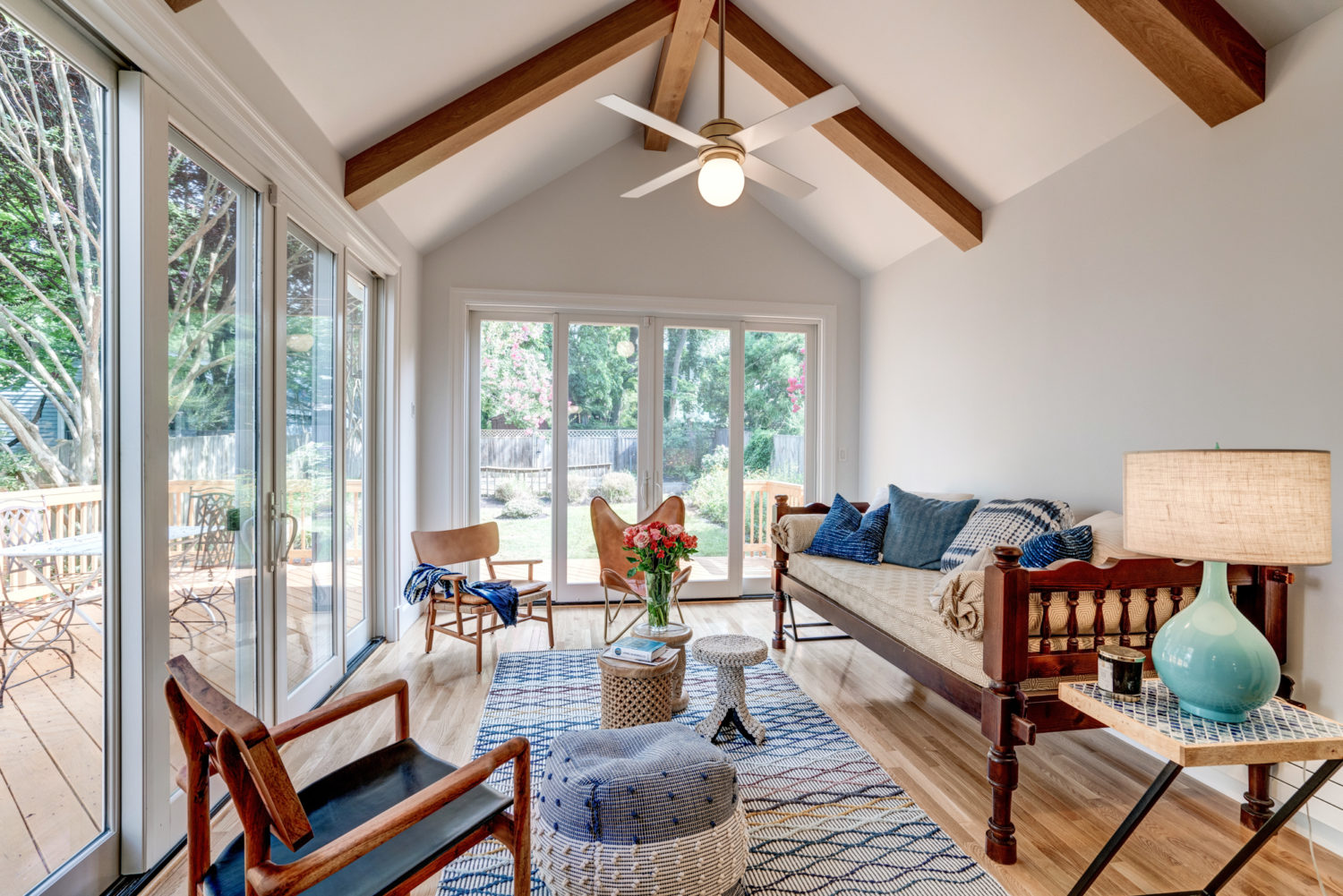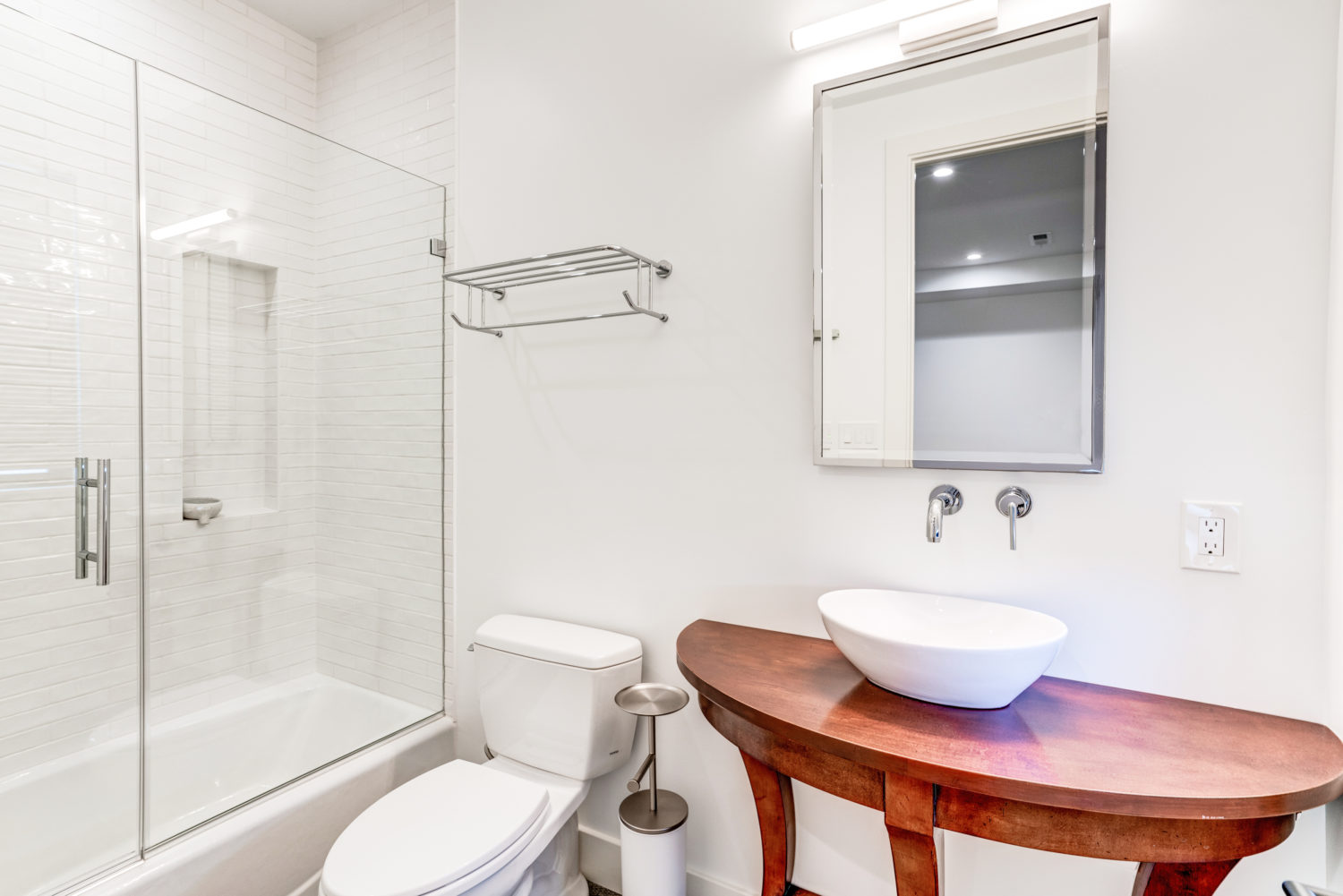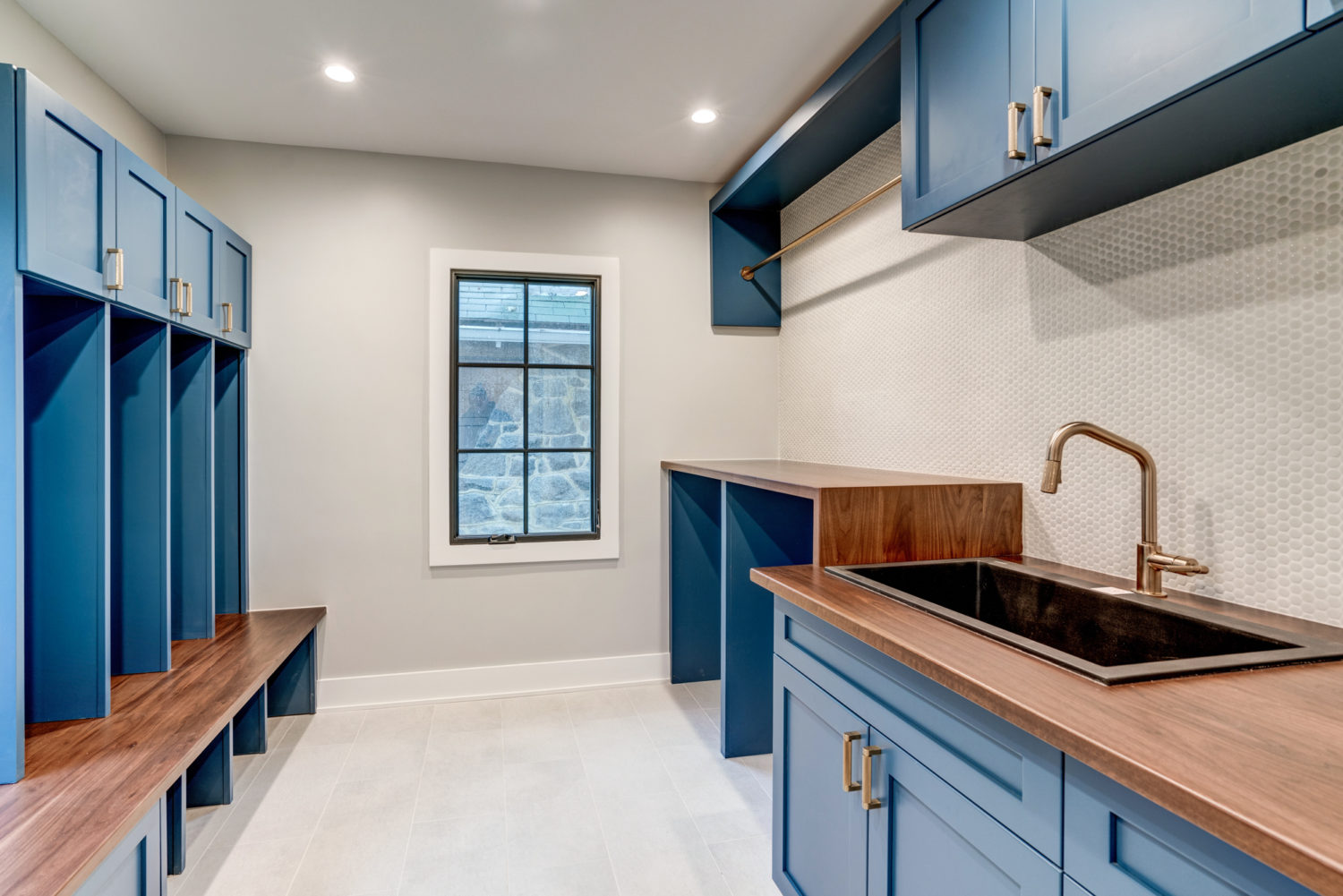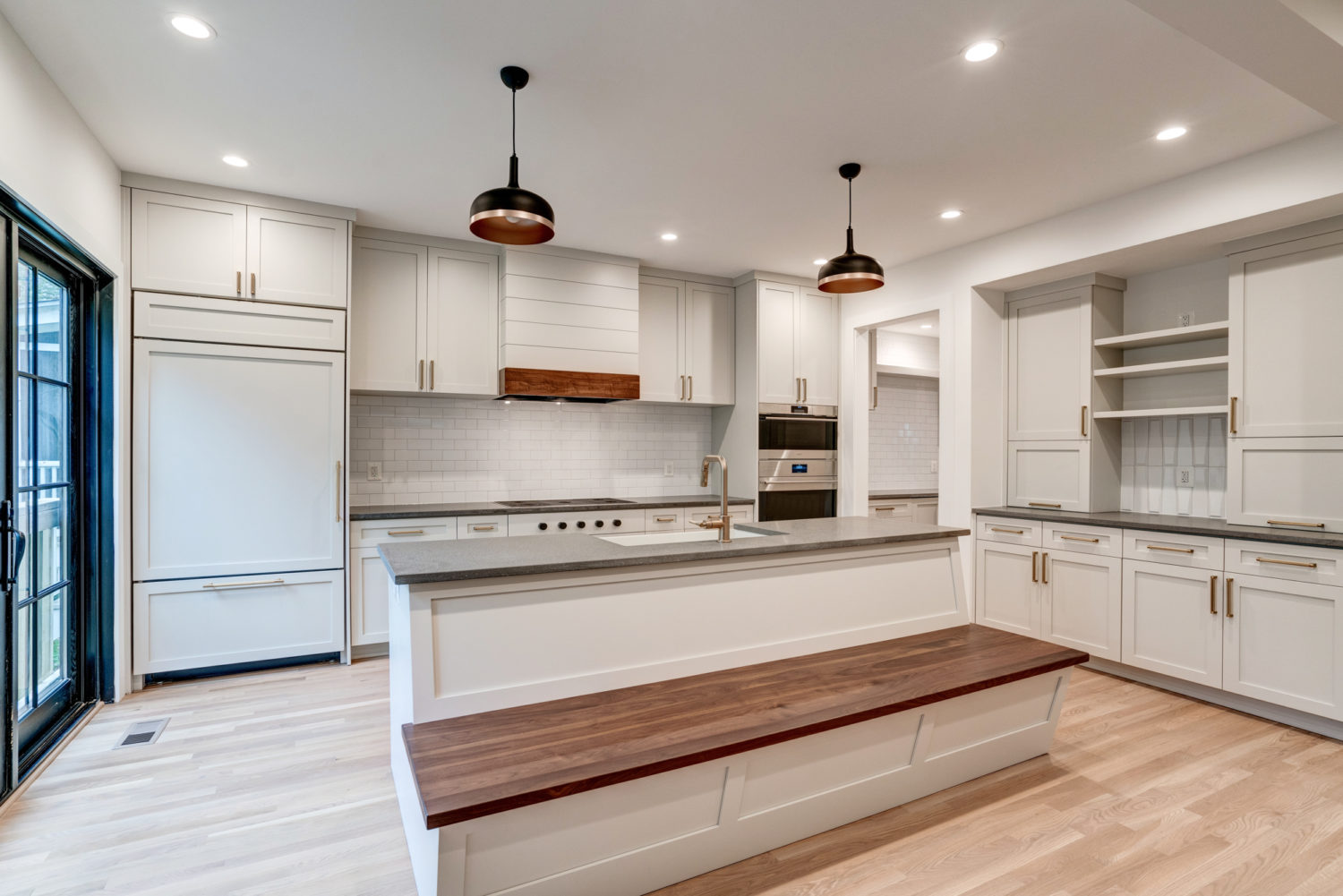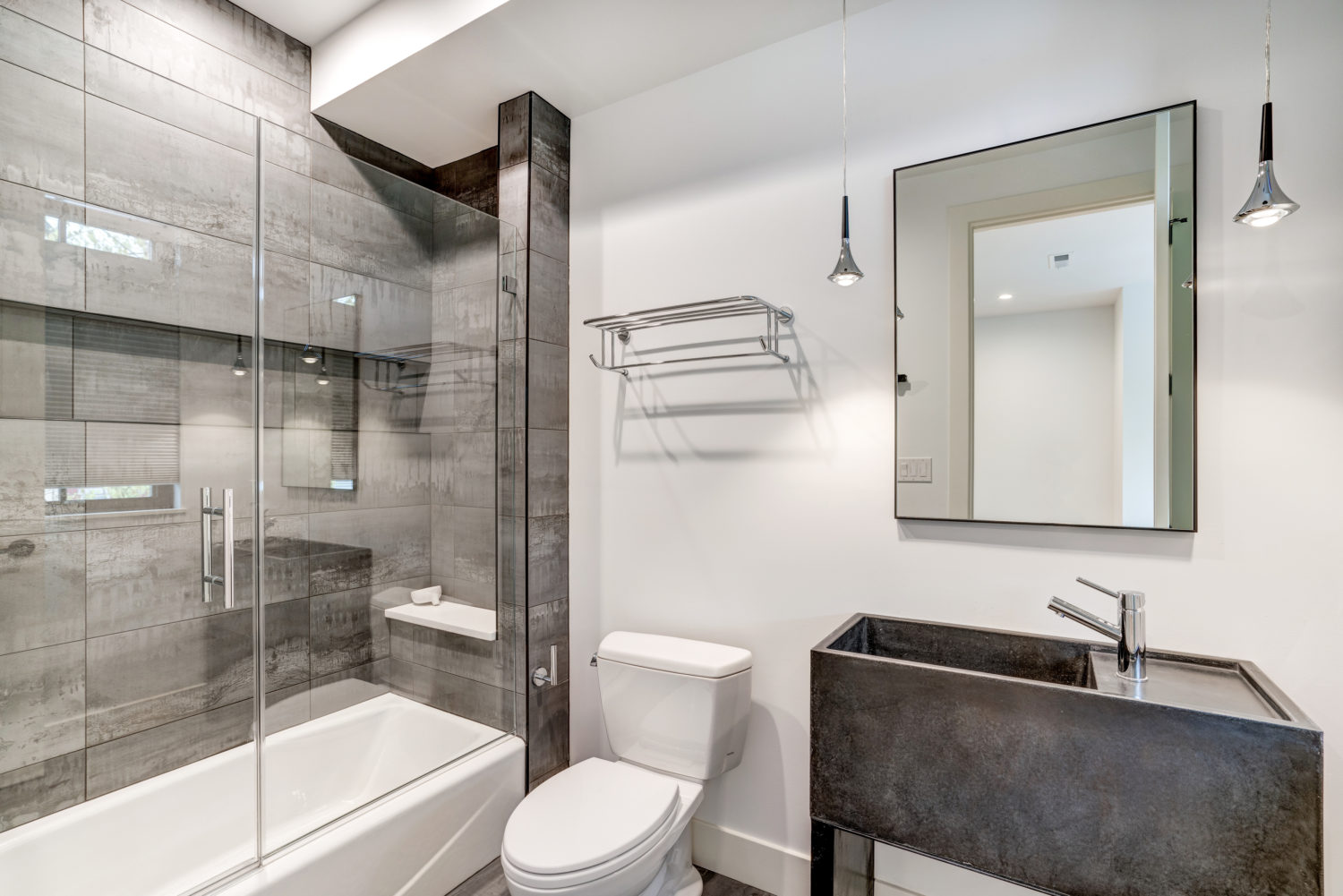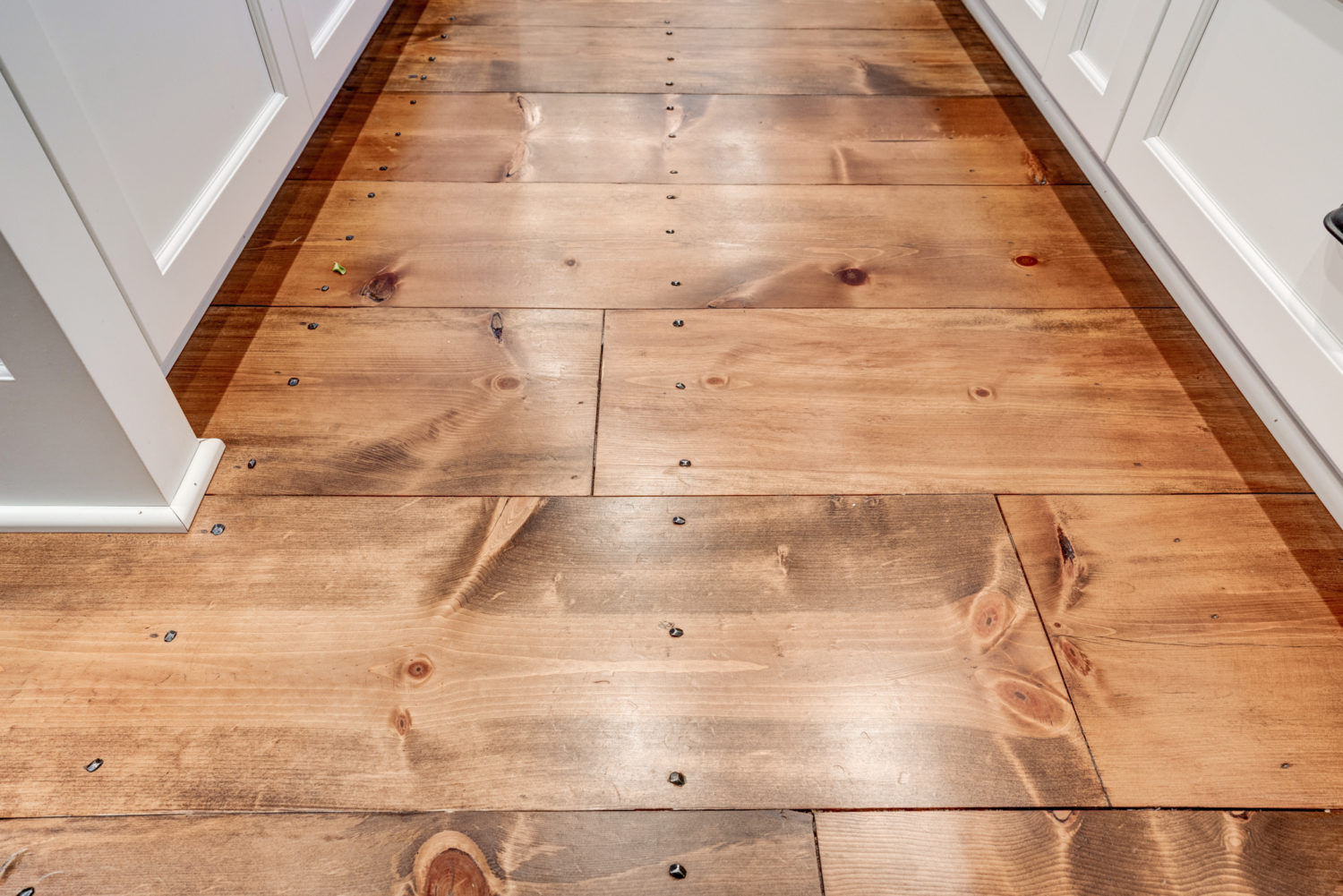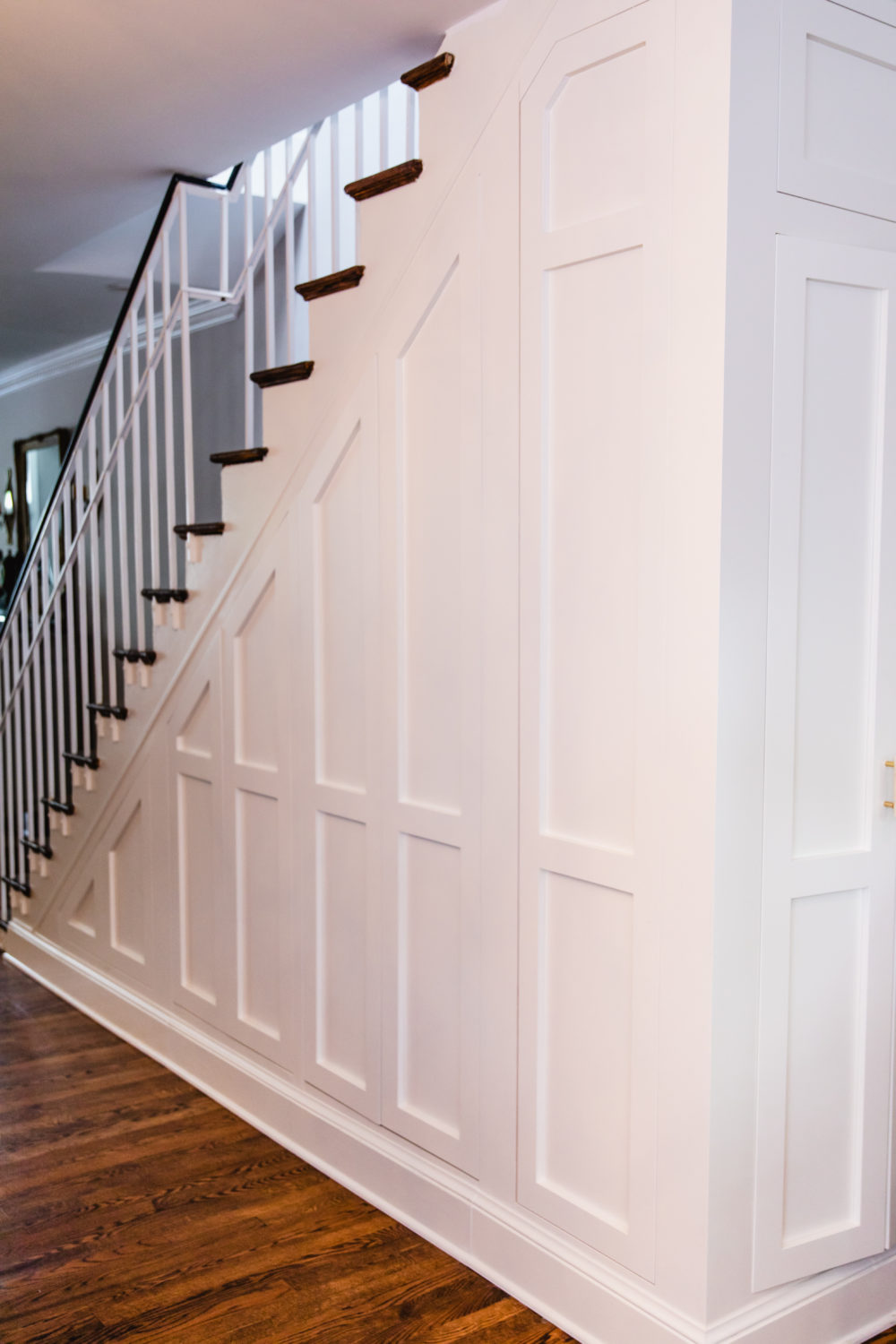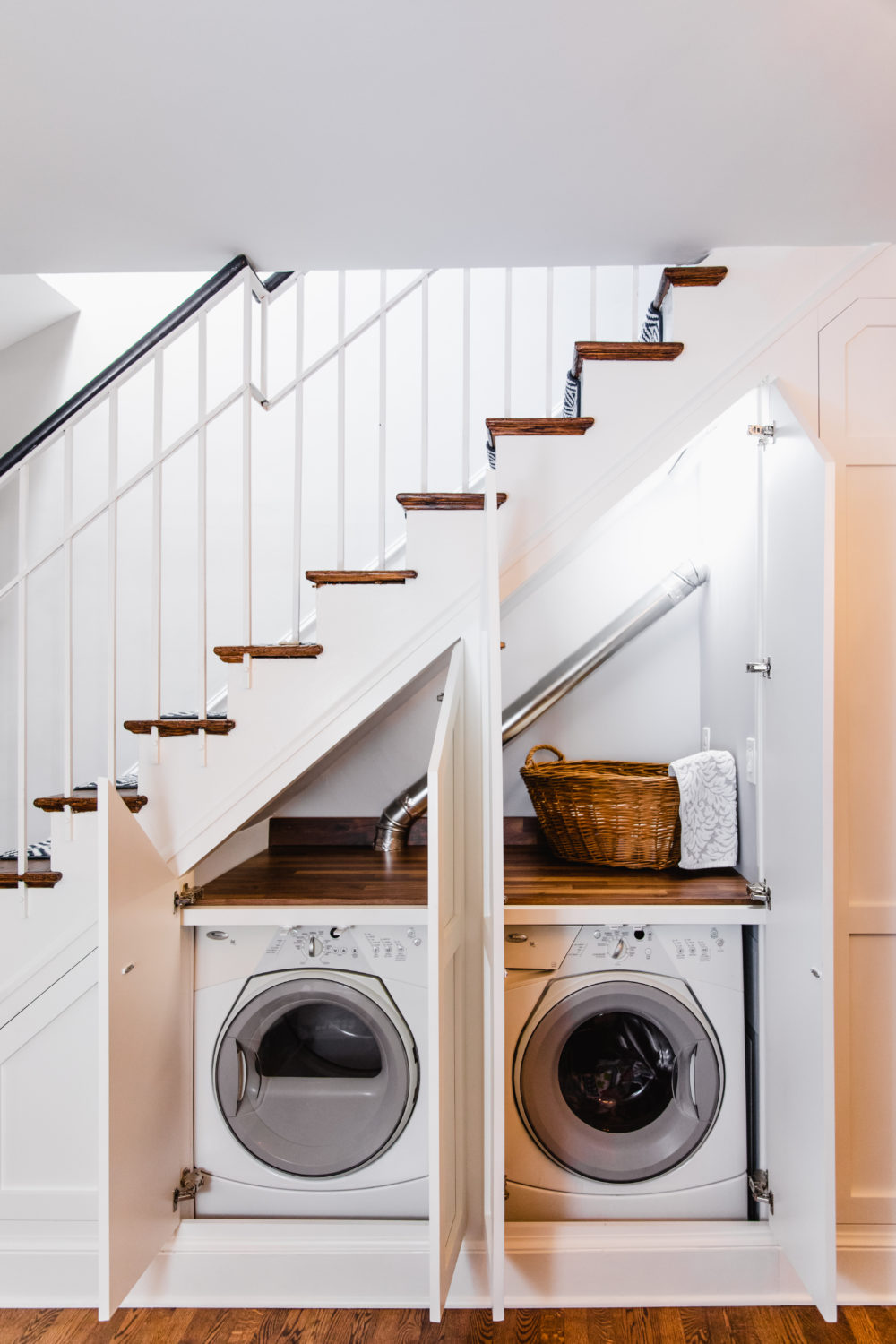Do you know your signature interior design style, and how you will bring it to life in your home design?
The choices may seem overwhelming with so many home style options, but Hammer Design Build Remodel has found that the classics stand the test of time. Transitional, modern, contemporary, modern farmhouse, industrial, and even traditional interior design styles are among the most sought-after styles for Hammer clients. The key is to decide which design reflects your style and provides comfort for your lifestyle.
Home design features in all styles are ever-evolving, with some fads lasting longer than others. However, all interior design styles build on the foundation of distinctive furniture, lighting, accessories, and décor materials like fabrics, textures, wall coverings, metals, and color palettes.
Timeless Home Design Classics
What inspirational images and design features ignite your passion, create peace, and catch your eye?
Transitional Interior Design Style is a sophisticated blend of old and new, and marries traditional with modern elements to create a personalized and timeless home design.
Modern Interior Design Style is inspired by mid-twentieth-century design combining natural teak, blond, and walnut wood with bold colors and sleek lines. It is often considered the ‘it’ look in the world of design.
Contemporary Interior Design Style features uncomplicated, bold elements with clean lines to create a simple yet sophisticated living space.
Modern Farmhouse Interior Design Style is ideal if you are drawn to culturally rich and historic design elements and natural stone and wood features. It is enriched with salvaged wood, metals, shiplap, barn doors, and wide-planked wood against a neutral or white color palette.
Industrial Interior Design Style is deeply rooted in its past when Western European factories closed at the end of the second industrial revolution. Many large buildings were left vacant, so a trend began to convert them into residential housing to accommodate the growing population. Natural brick, untreated wood, and black metals are signature design elements of this design style.
Traditional Interior Design Style is among the oldest and most common interior design styles throughout the world. Because it is rooted in heritage and classic shapes, it presents a consistent, predictable theme with little change over time featuring hand-carved furniture and hand-made drapery from hundreds of years ago. Formality, symmetry, and layering are the foundations of traditional design and set the stage for other styles to develop from this tried-and-true combination.
1. Transitional Interior Design
Transitional interior design is among the most popular styles because it bridges more-formal traditional elegance and more-simple contemporary lines and textiles. Transitional style showcases the furniture and materials while minimizing accessories and encouraging the use of area rugs, throw pillows, and art to create depth and color in the decorating process.
Transitional interior design is a blend of masculine and feminine influences, and because it marries different styles, it creates interest in a room and personal, unique designs. Curved furniture legs, arms, backs to chairs with reupholstered textured materials; wood; colored walls in neutrals, whites, and dark or jewel tones; long curtains; crown molding; mixed metals in hanging ceiling chandeliers and over-the-fireplace sconces contrast with mirror frames or end tables; patterned or raised wall treatments are stylish and inviting features of transitional design.
When deciding on transitional interior design, consider almost everything that stems from traditional interior design ideas. What makes it transitional is breaking steadfast rules of traditional design elements and incorporating furniture pieces and textile patterns that bring out your personality and accommodate your lifestyle to create a signature design style for your home.
2. Contemporary Interior Design Style
Contemporary interior design features a sleek and simple look that creates a distinguishing space that represents the present moment yet temporarily borrows from other design periods to create a lasting home design. It is the only style that is constantly changing and evolving and has done so throughout history.
Newcomers to design often confuse contemporary with modern interior design styles. Contemporary style is of the moment and free of restrictive design rules, whereas modern design represents an updated revision to more mid-century designs with squared graphic lines.
When deciding on contemporary interior design, consider whether you are drawn to detailed moldings on walls and windows, open layouts, exposed legs and clean, straight lines on furniture, mirror and glass to reflect light, neutral colors in paint and textured fabrics, and a light and airy feel to your living space. Contemporary-designed furniture prioritizes comfort, with plush cushions and textures like suede and velvet.
3. Modern Interior Design Style
Modern and contemporary design share similarities but are two distinct interior design styles. Contemporary is ever-evolving, while modern incorporates a specific period from the mid-20th century. Today, modern design includes the classic mid-century modern, organic modern, and urban modern interior home styles.
Modern interior design generally showcases square shapes and forms without extra flare or embellishments beyond an occasional pop of color to contrast with a typically calm, peaceful, and neutral pallet from floor to ceiling. Furniture features clean, whimsical, smooth lines with sleek but not varnished surfaces and is often designed to cradle the body for comfort. Furniture is also an art statement with a hairpin or tapered legs and organic shapes and forms.
Metal, chrome, and glass are favorites because they reflect light, are shiny or transparent, and help create a light, airy feel to your home design. Décor is minimal but comfortable and uses colorful or bold wall art instead of collectibles or knick-knacks to create a warm, inviting environment to relax.
Classic mid-century modern interior design style
No matter the current decade, classic mid-century modern is timeless. American furniture and fabric designers in the 1950s and 1960s sought to break out of traditional designs to create a new, refreshed modern style. A breezy, seamless flow is essential to classic mid-century modern designs so indoor-outdoor living is a standard in the design. A sunroom, enclosed porch, extended deck, and floor-to-ceiling glass windows or wall-to-wall sliding doors create an extension to the outdoors and an invitation to appreciate nature as decor.
The once-standard avocado green refrigerators, orange shag rugs, and mustard yellow throw pillows are currently outdated design features. Although no longer on a large scale, these colors do remain a constant today to add pops of color to accent a room. They continue to compliment rich, luxurious darker woods, like walnut, rosewood, and teak. You may even find an Eames lounger, the wishbone chair, or the egg chair to complete your home’s authentic classic mid-century modern interior design style.
Organic modern interior design style
Like all modern interior designs, organic modern incorporates the best from the 50’s and 60’s for a refreshingly new American design inspired by retro Danish simplicity in clean lines, unpretentious silhouettes, subtle fabric, predictable shapes, and functionality. Organic modern design is casual, inviting, minimal, and neutral and heavily features the layering of neutral-colored textured rugs, window treatments, furniture fabrics, and textiles throughout your home. The interest lies in the layering of different materials rather than introducing the classic pop of color in avocado green, mustard yellow, chartreuse, and fire red or orange. Compared to the classic mid-century modern look of darker woods, the organic modern style features light-toned woods and iconic lighting fixtures in black, chrome, gold, or brass.
Urban modern interior design style
Modern farmhouse interior design is becoming a popular standard and is not going away any time soon. It is rich in traditional farmhouse characteristics that are rural and agriculturally inspired but is more simplified and cleaner in thoughtfully displaying meaningful décor and using cohesive, contemporary elements. Barn doors will remain all the rage as they save space in a room and are more visually appealing than the traditional pocket door. Shiplap creates depth on the walls and contrasts calmly against favorite art or treasured finds from a Vintage store, flea market, estate sale, or boutique.
In modern farmhouse design, doors and walls are as essential as wide-plank wood flooring; raw-wood furniture; rustic weathered woods and whitewashed finishes; a connection to nature and greenery; open concept living; mixed contrasting metals from black to gold to nickel; sleek lighting; creative accessories; and neutral or black and white color palettes. Pops of color often represent nature, including sage green, burnt orange, deep navy, or a plaid combination of all. Décor is easily changed seasonally and often serves an organizational or inspiration purpose.
When considering the modern farmhouse style, warm, practical, comfortable, and inviting come to mind. Salvaged wood and metals pull together a rustic look with a modern, refined approach to inspiration. Modern farmhouse style is not cluttered and, instead, is considered a modern interior design style. Modern farmhouse design is welcoming and suggests gathering in a brightly lit kitchen, yet incorporates a tinge of traditional formal design in that every style element serves a purpose.
5. Industrial Interior Design Style
Industrial interior design is most effective in urban areas, like Washington, D.C. row homes or lofts, where it seems natural to expose pipes, rustic wood beams, unfinished metals, brick walls, or concrete floors. It leans towards a clean-lined, distressed, minimalistic warehouse or factory-esque style dating back to the end of the second industrial revolution. Anything with a rugged patina, signs of aging, vintage charm, or a reclaimed vibe is perfect for the bones of a remodel and home design décor.
Set against a neutral color scheme, cozy textiles, and oversized artwork soften the foundation and infrastructure found in the industrial approach and conveys the soul of the home. Moody hues, heavy metal pieces, and leatherwork well with industrial interior design as it creates a steampunk aesthetic.
If you are thinking about remodeling your home’s interior design, Washington, D.C.’s Hammer Design Build Remodel is interested and well-positioned to work with you to design and create your dream home through custom renovations.
Contact Hammer Design Build Remodel to discuss your upcoming home renovation.

